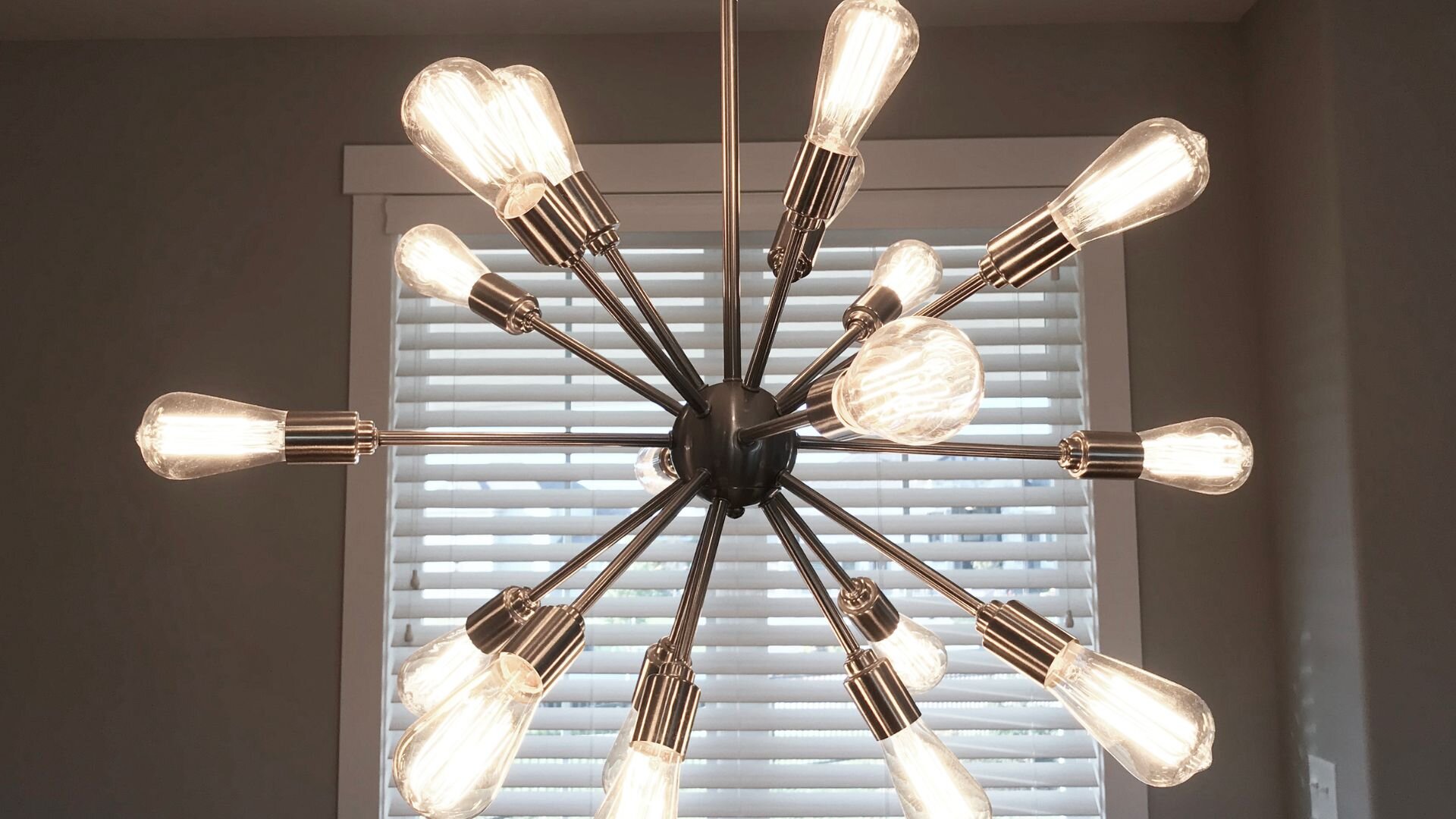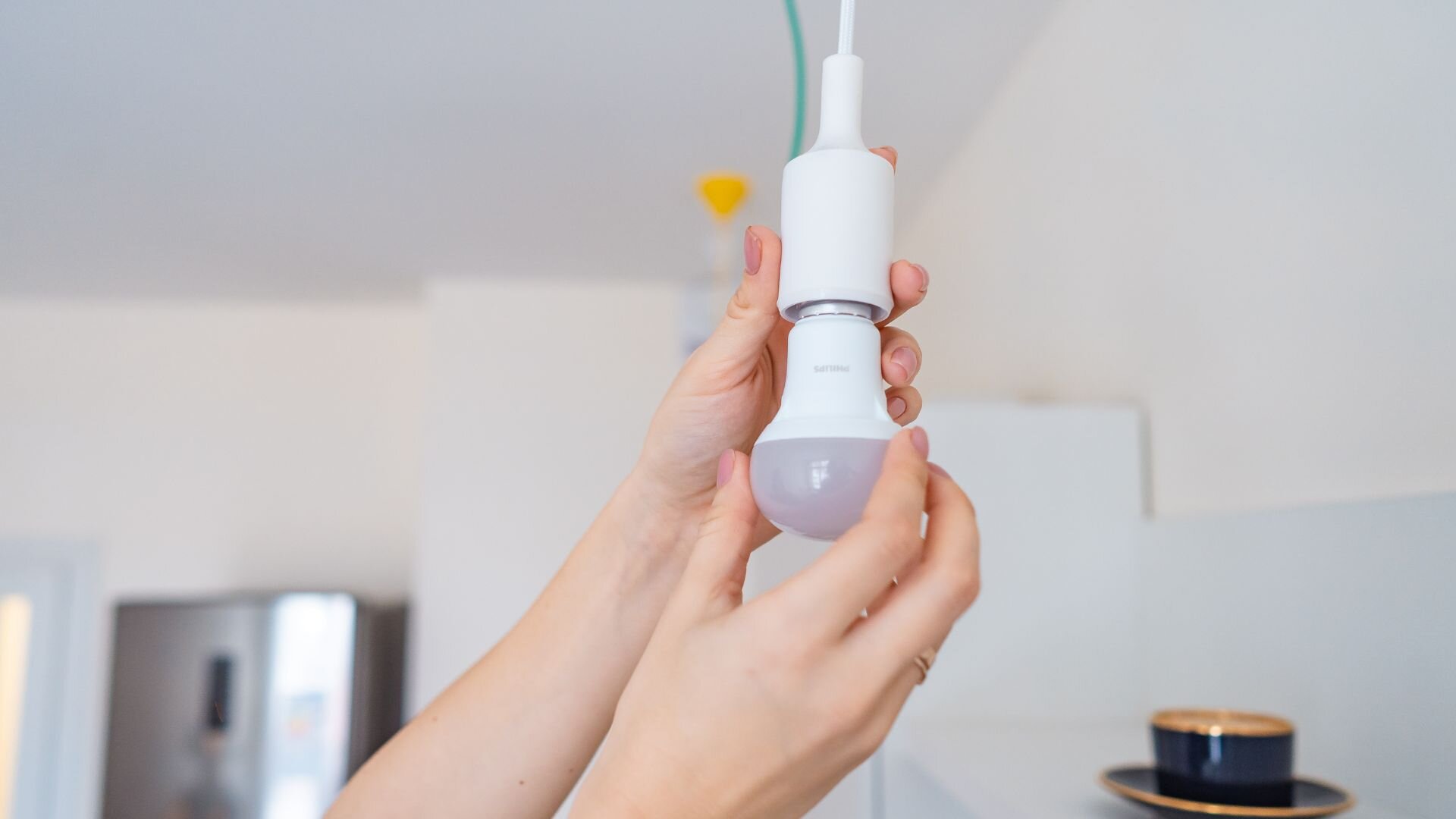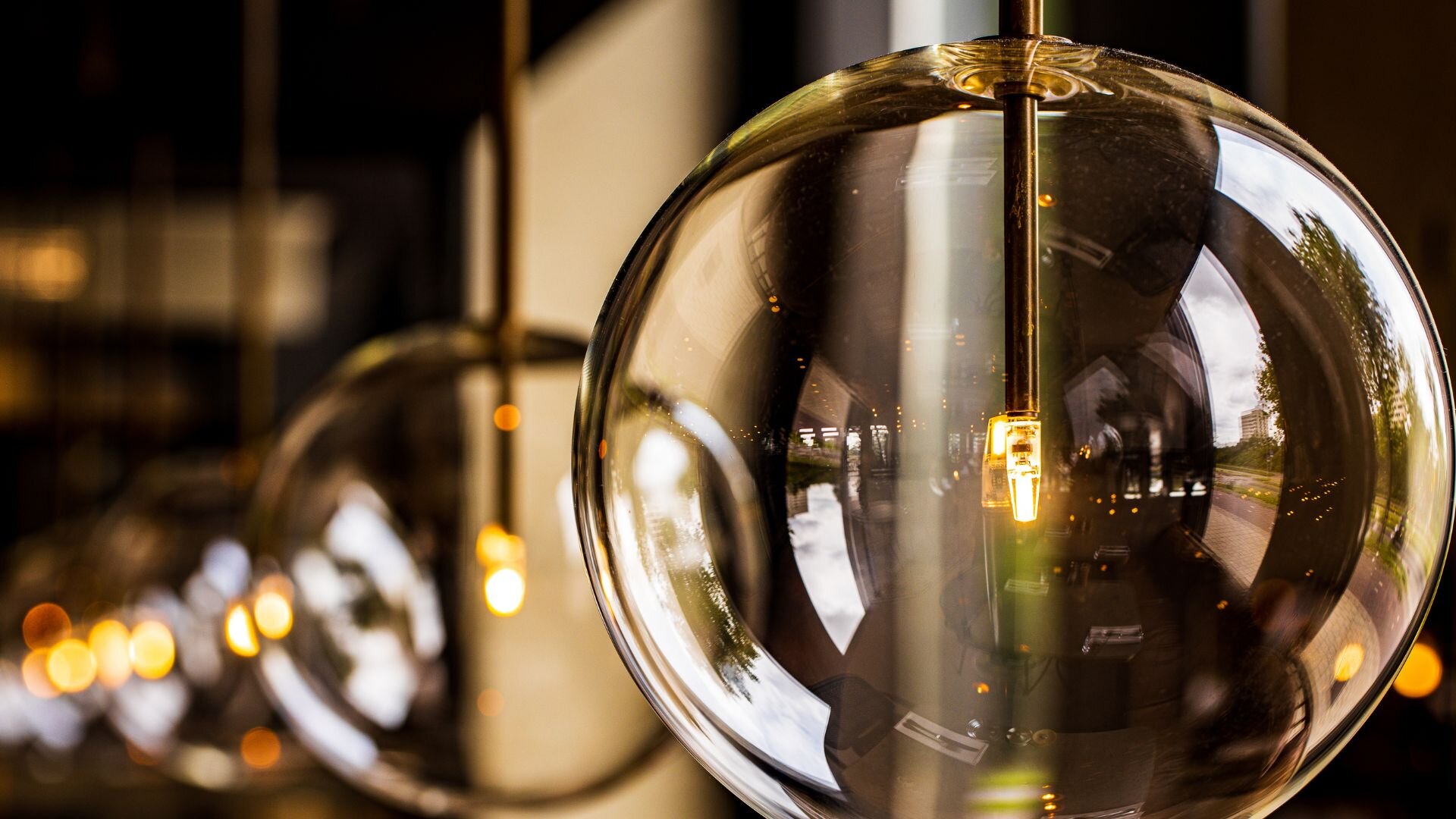Lighting has the power to completely change a room, turning it into either a warm, welcoming retreat or a cool, energising space. One key element in this dynamic balance of light and mood is the colour temperature.
Colour temperature describes how warm or cool a light feels and is measured on the Kelvin scale. This key quality dramatically affects the entire lighting vibe and mood in any area. Warm tones, from reddish-yellow to soft yellowish-white, bring a snug, intimate feel. Meanwhile, cooler tones, from bluish-white to stark white, offer a fresh, invigorating atmosphere.
Grasping and thoughtfully choosing the right colour temperature is key to setting the perfect scene—whether it’s crafting a relaxing living room, a productive workspace, or a friendly dining space.
What Is Colour Temperature?
Colour temperature measures the warmth or coolness of a light source, expressed on the Kelvin (K) scale. This scale quantifies the colour appearance of light, ranging from warm reddish-yellow hues to cool bluish-white tones. The higher the Kelvin value, the cooler the light appears, while lower values indicate a warmer, reddish tone.
The relationship between colour temperature and the appearance of light is directly correlated. Warm colour temperatures, typically 2700K to 3000K, emit a yellowish or reddish glow, creating a cosy and inviting ambience.

These hues are often associated with the warm, glowing light of candles or traditional incandescent bulbs, making them an ideal choice for living spaces, bedrooms, and dining areas where a relaxing and intimate atmosphere is desired.
On the other end of the spectrum, cool colour temperatures, ranging from 4000K to 6500K, produce a crisp, bluish-white light. This cooler tone is often perceived as more energising and invigorating, making it suitable for workspaces, kitchens, and bathrooms where focus and productivity are priorities. Cool colour temperatures are also commonly used in commercial and industrial settings, providing bright and efficient illumination.
Within this spectrum, various colour temperature ranges have emerged with specific applications:
- Soft White (2700K-3000K): Warm and inviting, ideal for living rooms and bedrooms.
- Warm White (3000K-3500K): Slightly cooler than soft white, suitable for dining areas and accent lighting.
- Bright White/Cool White (3500K-4100K): Crisp and clean, often used in kitchens and bathrooms.
- Daylight (5000K-6500K): Mimicking natural daylight, commonly used in commercial and industrial settings and for task lighting.
Choosing the Right Colour Temperature
Picking the right colour temperature is vital for setting the mood and functionality of a space. Various colour temperatures can dramatically affect the atmosphere, mood, and comfort, so it’s important to select wisely, depending on what the space is used for.

Warm Tones for Cosy Ambience
Warm colour temperatures ranging from 2700K to 3000K are highly recommended for living rooms, bedrooms, and dining areas where a cosy and inviting atmosphere is desired.
These soft, yellowish-white hues evoke a sense of warmth and intimacy, creating a relaxing and welcoming environment perfect for unwinding after a long day or enjoying quality time with family and friends.
Cool Tones for Focused Environments
Conversely, places like offices, kitchens, and bathrooms often thrive with cool colour temperatures ranging from 4000K to 6500K.
These crisp, bluish-white tones provide bright, energising illumination to enhance focus, productivity, and visibility. Cooler lighting in kitchens can help distinguish between various food colours and textures, ensuring accurate meal preparation.
In the same way, cool lighting can highlight details in bathrooms, making grooming tasks more comfortable and precise.
Task-Specific Lighting Considerations
The impact of colour temperature extends beyond the overall ambience; it can also influence specific tasks and activities. For instance, warmer lighting may be preferable for reading or leisure activities requiring a relaxed and comfortable atmosphere.
Conversely, cooler lighting is often better suited for tasks that demand precision and attention to detail, such as working on a computer or engaging in hobbies like crafting or woodworking.
Personal Preferences and Emotional Impact
It’s important to note that colour temperature can also affect mood and emotions. Warm lighting has been known to evoke feelings of cosiness and relaxation, while cooler tones can promote alertness and energy. However, personal preferences play a significant role in determining the most suitable colour temperature for an individual’s needs and preferences.
Some individuals may find warm lighting soothing, while others might perceive it as too harsh or overpowering. Similarly, cool lighting may be invigorating for some but could potentially cause eye strain or discomfort for others.
It’s essential to consider individual preferences and adapt the lighting accordingly, ensuring a comfortable and enjoyable experience for all occupants.
Combining Colour Temperatures
While choosing a single colour temperature for a space is common, combining different colours within the same area can create a dynamic and versatile lighting experience. This technique, known as layering, allows for creating distinct zones or focal points within a room.
For example, warm colour temperatures (2700K-3000K) can foster a cosy and inviting atmosphere in an open-concept living space in the seating area. In contrast, cool colour temperatures (4000K-6500K) can be implemented in the adjacent kitchen or workspace to promote focus and productivity. This strategic use of contrasting colour temperatures effectively delineates different zones within the same space, catering to varying needs and activities.

Another method is mixing warm and cool colour temperatures to spotlight certain architectural features or artwork. Warm lights can bring out the richness of materials like wood or stone, while cool tones can boost the vibrancy of art or lend a sleek, modern look.
To maximise the benefits of combining colour temperatures, it is highly recommended to incorporate dimmable lighting systems. These systems allow for seamless adjustments of colour temperature based on the time of day or the intended activity.
For instance, warm lighting can be used in the morning and evening to create a cosy ambience, while cooler tones can be employed during the day to boost productivity and focus.
Dimmable lighting also allows fine-tuning the atmosphere according to personal preferences or specific occasions. Whether hosting a dinner party or settling in for a movie night, the ability to adjust the colour temperature and intensity of the lighting can significantly enhance the overall experience and ambience.
Achieving Lighting Perfection
While understanding colour temperature and its impact on ambience is crucial, achieving lighting perfection often requires the expertise of professionals.
Enersol Electrical, a leading name in the electrical and lighting industry on the Gold Coast, offers invaluable guidance and personalised recommendations to help homeowners and businesses create their ideal lighting environments.
With years of experience and a deep understanding of lighting dynamics, the team at Enersol Electrical can assist you in selecting the right colour temperature and lighting solutions tailored to your specific needs. Whether you’re seeking a cosy and inviting atmosphere or a bright and energising workspace, their expertise ensures optimal lighting that enhances both functionality and aesthetics.
Don’t hesitate to contact Enersol Electrical for assistance transforming your space through thoughtful lighting design. Their commitment to excellence and customer satisfaction guarantees the best possible advice and professional installations, ensuring a seamless and enjoyable lighting experience.